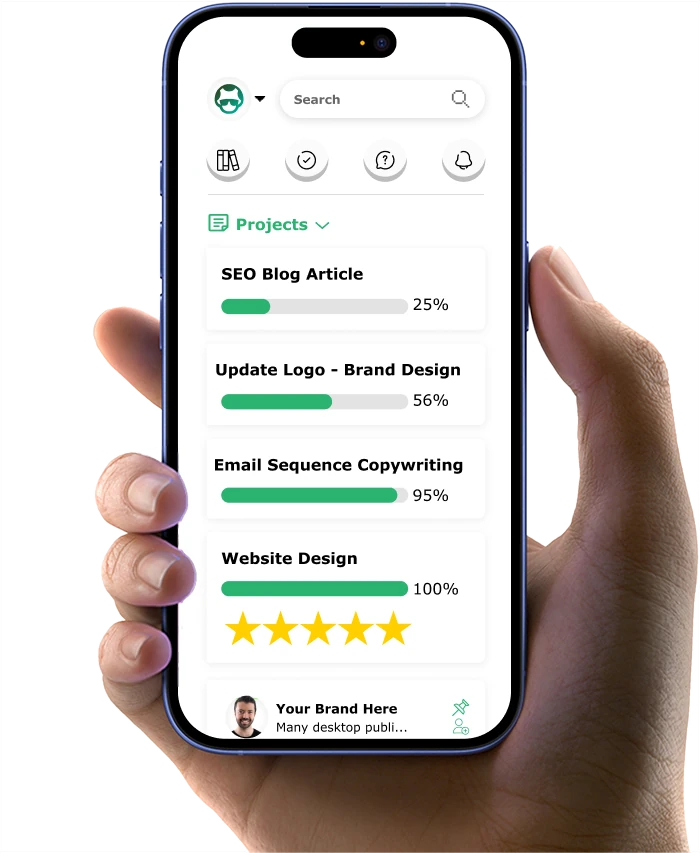9 Smart Ways Busy Coaches Repurpose Content

As coaches, you and I both know the content creation journey often feels overwhelming. It's a path littered with late nights and lost weekends... And dwindling results.
Maybe you've been there already – a Sunday night, in the quiet of your home office, the world asleep, while you're hunched over your laptop creating next week's content. But it feels like you're just shouting into the void.
Content repurposing for coaches is the skill that changes everything. According to a recent industry survey, most coaches struggle with content burnout while simultaneously needing consistent content to attract clients.
In this article, you'll discover how to turn your content creation burden into a strategic advantage. Here are some of the insights you'll get:
- Unlock the "Session-to-Content Pipeline" that transforms one coaching call into two weeks of high-converting material
- Master the Hub-and-Spoke secret that positions you as the go-to expert without extra work
- Discover how AI tools can slash your content creation time while your engagement numbers climb
- Learn the Client Story Method that turns one success story into seven different trust-building assets
- Reveal the Platform Optimization Formula that makes your message resonate perfectly on any platform
Let's start by defining what strategic content repurposing really means for coaches and why it's different from what everyone else is doing...
If you want to get your marketing work done for your business (or for your clients’), then you HAVE to learn more how you can delegate unlimited marketing projects & tasks without the headaches of hiring. Download this free guide: 33 Examples of Marketing Projects You Can Delegate to Growbo
Repurpose Content Strategy #1: Turn One Coaching Session into a Content Goldmine
How to repurpose coaching content starts with what you're already doing every day—your actual coaching sessions. Each time you work with a client, you're creating valuable content without even realizing it.
Think about your last breakthrough session with a client. The questions you asked, the insights you shared, and the transformation that occurred contain dozens of content pieces waiting to be extracted. With your client's permission, recording these sessions gives you a treasure trove of authentic material.
Setting up a simple recording system takes just minutes. Use Zoom's recording feature or a dedicated app like Otter.ai that provides transcription. Before recording, create a simple consent form for clients that explains how their session might be used (anonymized) for content purposes.
Once you have a recorded session, follow this process:
- Listen to the recording and mark moments where you shared important insights
- Identify powerful questions you asked that prompted client breakthroughs
- Note any frameworks or processes you walked the client through
- Highlight client "aha moments" that demonstrate your coaching value
From just one 60-minute session, you can typically extract:
- 5-7 social media posts based on key insights
- 1-2 blog posts expanding on a framework you used
- A short video tutorial demonstrating a technique
- An email sequence teaching the process to prospects
- A podcast episode discussing the core concept
This approach works across all coaching niches. Life coaches can extract mindset shifts, business coaches can showcase strategy development, and health coaches can demonstrate habit-building techniques.
According to a study from Keywordseverywhere, brands that use user-generated content (UGC)-which often includes authentic client interactions-see a 28% higher engagement rate than those that don't. This makes sense—potential clients want to see real examples of your coaching in action. The key is maintaining client confidentiality while sharing the valuable insights. Remove identifying details, get explicit permission, and focus on the coaching process rather than personal details.
This approach saves you from staring at a blank page wondering what to write about. Your content becomes a natural extension of the work you're already doing, making it more authentic and effective at attracting ideal clients.
Repurpose Content Strategy #2: The Hub-and-Spoke Content Ecosystem for Coaching Authority
When you repurpose coaching content using the hub-and-spoke model, you create a powerful system that establishes your authority while saving you hours of creation time. This approach centers around developing one comprehensive piece of content (the hub) that branches out into multiple smaller pieces (the spokes).
Think of your hub as a detailed blog post, video, or podcast episode that thoroughly explores a core coaching concept you're known for. Your spokes are shorter content pieces derived from this hub that direct people back to the main resource.
To implement this strategy in your coaching business, start by identifying your most valuable coaching topics. These should be subjects where you have unique insights and that directly relate to the problems your ideal clients want to solve.
For example, if you're a business coach specializing in productivity, your hub might be a comprehensive guide on "How to Double Your Productivity Without Burnout." From this single piece, you can create spokes like:
- Social media posts highlighting individual productivity techniques
- Short video demonstrations of specific tools you recommend
- Infographics visualizing your productivity framework
- Email sequences breaking down the process step-by-step
- Quote graphics featuring key insights from the guide
Each spoke should provide value on its own while encouraging viewers to explore your hub content for the complete solution.
According to Colorwhistle, 46% of marketers think recycling existing content is more effective than creating brand-new material from scratch.. The hub-and-spoke model works for all coaching niches. Career coaches can create hubs around interview preparation, wellness coaches around holistic health approaches, and relationship coaches around communication techniques.
As noted on Growbo's resource for coaches,when your audience receives useful and valuable content that they can later apply to their lives, business, work, etc.—they'll want to come back for more. The hub-and-spoke model delivers exactly this kind of valuable, applicable content.
The beauty of this approach is that you're not creating disconnected content pieces that quickly get lost in the noise. Instead, you're building an interconnected content ecosystem where each piece supports the others, creating a cohesive experience that guides potential clients toward working with you.
Repurpose Content Strategy #3: AI-Powered Coaching Content Multiplication
AI tools have changed how coaches can repurpose content, making it possible to create more materials in less time without sacrificing quality. When used correctly, AI becomes your content assistant, helping you spread your coaching wisdom more efficiently.
You don't need to be a tech expert to use AI for content repurposing. Simple tools like ChatGPT, Jasper, or Copy.ai can help you transform one piece of content into multiple formats with just a few prompts.
Here's a simple AI workflow you can implement today:
- Start with your original content piece (article, video transcript, or podcast)
- Use AI to extract the main points and insights
- Ask the AI to adapt these points for different platforms
- Review and add your personal voice to each piece
- Schedule the content across your channels
The key is using specific prompts that guide the AI to create content that sounds like you. Here are five effective ChatGPT prompts designed specifically for coaches:
- "Take this coaching article [paste article] and create 5 LinkedIn posts that maintain my voice and expertise"
- "Convert these key points from my coaching session [paste points] into an email sequence for potential clients"
- "Transform this coaching concept [paste concept] into 10 engaging questions I can use for social media engagement"
- "Take this client transformation story [paste story] and create 3 different versions for Instagram, Facebook, and Twitter while maintaining client privacy"
- "Help me outline a video script based on this coaching article [paste article] that delivers the same value in 5 minutes"
According to Adobe, 56% of small business owners who use AI to repurpose content save 1–5 hours a week. The most important thing to remember is that AI should enhance your voice, not replace it. Always review AI-generated content to ensure it sounds like you and reflects your coaching philosophy accurately.
This approach works for all coaching specialties. Executive coaches can repurpose leadership insights, life coaches can adapt mindset strategies, and health coaches can modify nutrition guidance—all using the same AI workflow.
When implementing AI in your content strategy, start small. Choose one piece of existing content and use AI to repurpose it into three different formats. As you become comfortable with the process, you can expand to create more comprehensive content systems.
Repurpose Content Strategy #4: Turn Your Coaching Methodology into a Content Series
Your coaching methodology is one of your most valuable assets. When you repurpose this methodology into a content series, you create a powerful way to showcase your expertise while educating potential clients about your approach.
Every coach has a unique process they use with clients. Whether you call it a framework, system, or methodology, this process represents the core of how you help clients achieve results. By breaking this methodology into smaller pieces, you create weeks of content from something you already use every day.
Start by mapping out your complete coaching process from start to finish. Identify each distinct phase, step, or principle that makes up your methodology. For example, if you're a career coach, your methodology might include phases like "Career Clarity," "Personal Branding," "Job Search Strategy," and "Interview Mastery."
Once you've identified these components, create a content plan that explores each element in depth. For each phase of your methodology, you can create:
- A detailed blog post or video explaining the concept
- Client stories showing this phase in action
- Common obstacles people face during this phase
- Tools or exercises you use to help clients through this phase
- Before/after comparisons showing results from this part of your process
This approach allows you to create a cohesive content series that walks potential clients through your entire coaching process, helping them understand how you work before they ever book a call with you.
According to HubSpot's 2024 State of Marketing Report, businesses using content repurposing strategies see a 35% reduction in content creation costs while maintaining or improving lead generation metrics. This approach is particularly effective for coaches who have a structured methodology.
The key advantage of this strategy is that it positions you as a coach with a clear, structured approach rather than someone who just offers general advice. Clients are more likely to invest in coaching when they understand your specific process for getting results. When creating your methodology-based content series, focus on the transformation each phase creates. Show potential clients not just what you do, but how each step brings them closer to their desired outcome. This creates both educational value and emotional connection with your content.
Repurpose Content Strategy #5: Client Success Story Multiplication System
Client success stories are among the most powerful content you can create as a coach. When you repurpose these stories across multiple formats, you create compelling evidence of your coaching effectiveness while saving significant content creation time.
Every successful client represents not just a win for them, but a valuable content opportunity for you. With the right approach, one client success story can generate multiple content pieces that showcase your coaching impact from different angles.
The first step is ethically gathering these stories. Create a simple process for collecting client wins that respects their privacy while capturing the details that make their story compelling. This might include:
- A post-coaching program questionnaire that asks about specific results
- A brief video testimonial recorded during your final session
- Before/after metrics relevant to your coaching niche
- Permission forms that clearly explain how their story will be used
Once you have a client success story, you can repurpose it into multiple formats:
- A detailed case study for your website
- Short-form testimonial quotes for social media
- A video interview highlighting their journey
- An email featuring their transformation
- Infographics showing their before/after results
- A podcast episode discussing their experience
- Blog posts analyzing the strategies that helped them succeed
Each format reaches different audience segments and showcases your coaching effectiveness in various ways.
According to research from Wisernotify, putting positive testimonials on sales pages increases conversions by 34%. This makes sense—potential clients want proof that your coaching works.
This strategy works across all coaching niches. Career coaches can showcase job placement successes, health coaches can highlight physical transformations, and business coaches can feature revenue growth stories. As noted on our article on coaching funnel, "adding retargeting ads in your coaching sales funnel make people come back to your site if they don't initially convert with the lead magnet offer. And it also tightens the conversion rate." Client success stories make excellent content for these retargeting efforts.
When repurposing client stories, focus on the specific aspects that will resonate most with your ideal clients. Highlight the obstacles they overcame, the specific coaching techniques that helped them, and the measurable results they achieved. This creates both emotional connection and practical proof of your coaching value.
Ready to change your coaching methodology into a powerful content engine without the endless hours of creation? Our team specializes in turning your unique process into compelling content that attracts ideal clients while you focus on what you do best—coaching. Book a call today and let's get started.
Repurpose Content Strategy #6: The Coaching Value Ladder Content System
Creating content that guides potential clients through your coaching offers is essential for growing your practice. The value ladder content system helps you repurpose your coaching content to naturally lead prospects from free resources to your paid coaching programs.
A coaching value ladder typically includes free content, low-cost offers, mid-range programs, and high-ticket coaching packages. By repurposing content for each level of this ladder, you create a clear pathway for clients to move from initial awareness to becoming paying clients.
Start by mapping out your complete coaching offer structure. Identify what you offer at each price point, from free resources to your most premium coaching packages. For each level, determine the key concepts, benefits, and transformation promises that make that offer valuable.
Once you've mapped your value ladder, create content that specifically addresses each level:
- Free content tier: Blog posts, social media content, and videos that provide valuable insights while introducing your coaching approach
- Low-cost tier: Content that promotes your ebooks, mini-courses, or workshops that solve specific problems
- Mid-range tier: Case studies, testimonials, and detailed content about your group coaching or membership programs
- Premium tier: In-depth content showcasing the transformative results of your high-ticket 1:1 coaching
The key is repurposing your core coaching concepts across each tier while adjusting the depth, specificity, and application based on the value level.
For example, if you're a business coach with a core concept about sales conversations, you might create:
- A free blog post with "3 Common Sales Conversation Mistakes"
- A $27 guide expanding to "The 7-Step Sales Conversation Framework"
- A $197 workshop on "Mastering High-Ticket Sales Conversations"
- Content about your $2,000 coaching program that includes personalized sales script development
According to Sixthcitymarketing, 94% of marketers say personalized content boosts sales. As noted on Growbo's resource for coaches, "Offering free—but valuable—resources to your potential clients or customers will help you generate more leads for your coaching business." The value ladder system ensures these free resources connect logically to your paid offerings.
This strategy works for all coaching niches. Health coaches can create value ladders from free nutrition tips to premium wellness programs, career coaches can move from resume advice to comprehensive career transformation packages, and relationship coaches can progress from communication tips to intensive couples coaching.
When implementing your value ladder content system, ensure each piece clearly communicates the specific value and outcomes at that tier while hinting at the additional benefits available at the next level. This creates natural progression that guides prospects toward your higher-ticket coaching services.
Repurpose Content Strategy #7: Platform-Optimized Coaching Content Formula
Repurposing your coaching content for different platforms is essential for reaching your ideal clients wherever they spend their time online. Each platform has unique characteristics that affect how your content performs, and adapting your message accordingly can dramatically improve your results.
Many coaches make the mistake of simply copying and pasting the same content across all platforms. This approach ignores the different user behaviors, content formats, and algorithm preferences of each platform. A more effective strategy is to adapt your core message to fit each platform's specific environment.
Start by identifying the 3-4 platforms where your ideal coaching clients are most active. For most coaches, this typically includes some combination of LinkedIn, Instagram, Facebook, YouTube, TikTok, or Pinterest. Each platform has distinct content expectations:
- LinkedIn: Professional tone, industry insights, longer text posts, business outcomes
- Instagram: Visual focus, personal stories, lifestyle elements, quick tips, emotional connection
- Facebook: Community-focused, conversational, question-based, group discussions
- YouTube: In-depth tutorials, longer format explanations, searchable content
- TikTok: Very short, entertaining, trend-based, personality-driven
- Pinterest: Instructional, visually appealing, solution-oriented, evergreen
Once you've identified your platforms, create a simple adaptation template for each one. This template should outline how you'll modify your core content to fit that platform's specific requirements.
For example, if you've created a coaching concept about "5 Morning Habits for Success," you might adapt it like this:
- LinkedIn: A text post discussing how these habits improve workplace performance with professional statistics
- Instagram: A carousel showing each habit with visually appealing graphics and personal stories
- Facebook: A question-based post asking followers which habit they struggle with most
- YouTube: A 10-minute video demonstrating each habit with detailed explanations
- TikTok: A 30-second clip showing the most surprising habit with an engaging hook
Research from Sixthcitymarketing shows that, 53% of marketers saw an increase in engagement after updating their content-suggesting that content tailored and optimized for its audience and platform performs better than generic, unoptimized content. This strategy works for all coaching specialties. Executive coaches can adapt leadership concepts, life coaches can modify mindset strategies, and health coaches can tailor wellness advice to fit each platform's unique environment.
The key is maintaining your core coaching message while adjusting the format, length, tone, and visual elements to match each platform's expectations. This ensures your content resonates with your audience regardless of where they encounter it.
When implementing this strategy, start with just two platforms. Perfect your adaptation process between these platforms before expanding to others. This focused approach will help you develop an efficient system that you can later scale to additional platforms.
Repurpose Content Strategy #8: The 1-to-9 Coaching Content Atomization Technique
Content atomization is a powerful way to repurpose your coaching content by breaking down one comprehensive piece into multiple smaller pieces. This approach helps you maintain a consistent content schedule without constantly creating new material from scratch.
Think of content atomization like breaking a large diamond into many smaller gems. Each smaller piece retains the value of the original while being more accessible and easier to consume. For coaches, this means creating one substantial piece of content and then extracting multiple standalone pieces from it.
To implement this technique, start by creating one comprehensive piece of content about a core coaching concept. This might be a detailed blog post, a 30-minute video, or an in-depth podcast episode. This becomes your "content pillar" from which you'll extract your smaller pieces.
Once you have your pillar content, follow these steps to atomize it into multiple pieces:
- Identify individual concepts, tips, or insights within the larger piece
- Extract standalone quotes or statements that make sense on their own
- Pull out statistics or data points that can be highlighted individually
- Isolate specific examples or case studies mentioned in the larger piece
- Note any frameworks or step-by-step processes that can stand alone
From one 1,500-word blog post or 30-minute video, you can typically extract:
- 5-7 social media posts focusing on individual tips
- 3-4 quote graphics featuring key insights
- 1-2 infographics visualizing frameworks or processes
- A short-form video highlighting the main concept
- An email newsletter summarizing the key points
According to Stratabeat, atomized content generated 30% more leads at a 20% lower cost per acquisition.
This strategy works for all coaching niches. Financial coaches can break down money management concepts, relationship coaches can atomize communication strategies, and career coaches can segment job search tactics into bite-sized pieces.
The key advantage of content atomization is that it allows you to maintain a consistent content schedule without constantly creating new material. By spending a few focused hours creating one comprehensive piece, you generate enough content for an entire week or more.
Key Takeaways from Content Atomization:
- Create one comprehensive piece of content weekly (blog, video, or podcast)
- Break it down into at least 9 smaller pieces for different platforms
- Schedule these pieces throughout the week for consistent visibility
- Track which atomized pieces perform best to guide future content creation
Repurpose Content Strategy #9: Multi-Sensory Coaching Content Transformation
People learn and consume information in different ways. When you repurpose your coaching content across multiple sensory formats, you reach more potential clients and accommodate various learning preferences.
The multi-sensory approach recognizes that some people prefer reading, others prefer listening, and still others prefer watching videos or looking at visuals. By adapting your content to these different preferences, you make your coaching insights accessible to a wider audience.
Start by identifying your primary content creation format—the one that feels most natural to you. This might be writing, speaking, or video. Create your core content in this format first, then adapt it to other sensory modalities.
Here's how to transform content across different sensory formats:
- Written to Audio: Record yourself reading your blog posts or articles to create podcast episodes or audio clips
- Audio to Written: Transcribe your podcast episodes or coaching calls to create written content
- Written to Visual: Transform key points from articles into infographics or slide presentations
- Video to Multiple: Extract the audio as a podcast, transcribe for written content, and create image quotes
For example, if you've created a blog post about "Overcoming Procrastination," you could transform it into:
- An audio version for people to listen to while commuting
- A video where you explain the concepts on camera
- An infographic visualizing the procrastination-busting process
- A checklist PDF that clients can print and use
- A slideshow presentation with the key points
According to Forbes, 43% of businesses seek expert help for video design and animation to enhance their content's visual appeal and engagement.
This strategy works for all coaching specialties. Executive coaches can transform leadership insights, life coaches can adapt mindset strategies, and business coaches can modify growth tactics to fit different sensory preferences.
The most efficient way to implement this strategy is to create a simple template for each transformation. For example, have a standard process for turning blog posts into audio, or for extracting key points from videos into infographics. This systematizes the repurposing process and makes it much faster.
Key Takeaways from Multi-Sensory Transformation:
- Identify your primary content creation format (writing, speaking, or video)
- Create a systematic process for transforming content into at least two other formats
- Focus on accommodating visual, auditory, and reading/writing preferences
- Track which formats generate the most engagement and client inquiries
If you want to get your marketing work done for your business (or for your clients’), then you HAVE to learn more how you can delegate unlimited marketing projects & tasks without the headaches of hiring. Download this free guide: 33 Examples of Marketing Projects You Can Delegate to Growbo
CONCLUSION
Let's be honest, you didn't become a coach to spend your Sunday nights creating next week's content. Yet here you are, sacrificing 15-20 hours weekly on content creation while your actual coaching business takes a backseat.
The pressure to constantly create fresh content can be overwhelming. But what if you could cut your content creation time by 60% while actually improving your coaching content results? That's exactly what happens when you start repurposing strategically.
Here are the practical steps you can start using this week:
- Record your next coaching call (with permission) and extract 5 different social posts
- Turn that blog post you wrote last month into a video, email, and social media content
- Adapt your content specifically for each platform instead of posting identical content
- Create multiple formats from client success stories (with permission)
- Use simple AI tools to help transform your written content into different formats
But implementing these coaching content strategies takes time you probably don't have. Between client sessions, admin work, and having a personal life, finding hours to set up new content systems feels impossible.
Ready to reclaim your time and amplify your coaching impact? Our expert team specializes in content repurposing that drives results. Stop struggling alone and let us handle your content strategy. Schedule a call today for a personalized solution that fits your coaching business.
Visit Growbo to get started. No long-term commitment required.
Which content repurposing strategy would make the biggest difference in your coaching business? Share your thoughts below!
Keep Growin', Stay Focused,
Image Credits:
1 - https://adrianscareerservices.com/products/interview-coaching-session
2 - https://colinscotland.com/chatgpt-for-coaches-a-comprehensive-guide/
3 - https://teachercareercoach.com/customer-success-skills-teachers-already-have/
4 - https://www.tiktok.com/@jeremy_miner
5 - https://www.youtube.com/watch?v=aJdcNeDIw1E


























